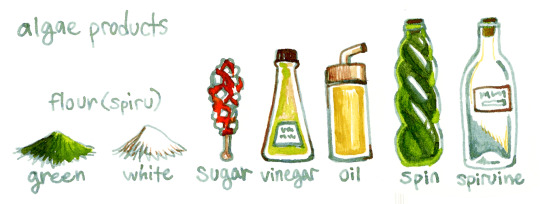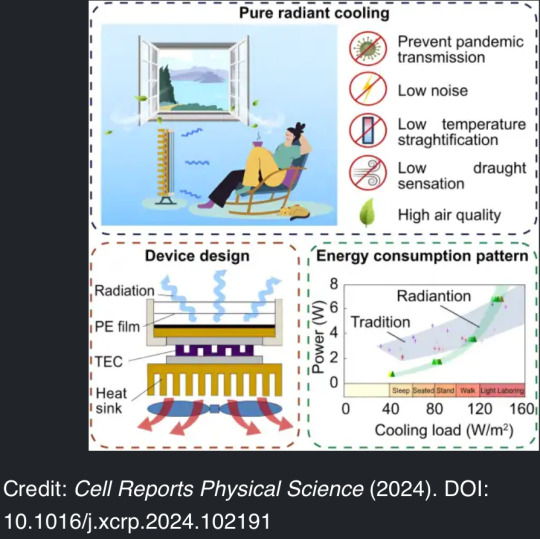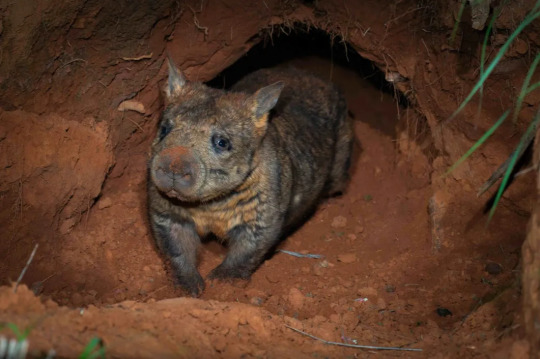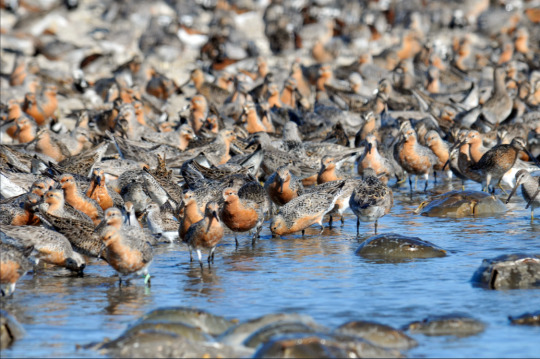#Energy-efficient farming
Explore tagged Tumblr posts
Text
Turning Waste into Power: How Kenyan Tea Farmers are Benefiting from Tea Clippings Gasification
A Deeside-based waste-to-energy company has unveiled its role on a project that will use waste tea clippings to make greener power for Kenyan farmers. l-r: Emily Mutindi Mutua of IITA, Paul Willacy of CSS, Niel Schulz from United Nations Industrial Development Organization, and Aarti Shah of IITA at a tea plantation in Limuru highlands, Kenya. (Photo credit: CSS) Kenya produces £1bn of tea per…
#Agricultural Innovation#aquaculture#biochar in farming#biomass for energy#carbon capture in farming#carbon footprint reduction#circular economy in agriculture#Compact Syngas Solutions#emissions reduction#energy challenges in tea farming#energy security in agriculture#energy shortages in Kenya#energy-efficient farming#gasification technology#global tea brands sustainability#green energy for farmers#hydrogen from gasification#improving crop yields#Kenya Climate Innovation Center#Kenya tea factories#Kenyan tea industry#methane fuel#power solutions for farmers#renewable energy in Kenya#renewable energy solutions#Scope 3 emissions reduction#soil fertility improvement#sustainable energy#sustainable tea farming#syngas production
0 notes
Video
youtube
Building an experimental Geothermal (High Tunnel) Greenhouse at Veganic ...
#youtube#Geothermal greenhouse#Experimental greenhouse#High tunnel construction#Greenhouse design#Sustainable agriculture#Veganic farming#Eco-friendly farming#Renewable energy in agriculture#DIY greenhouse project#Geothermal heating system#Energy-efficient farming#Green technology in agriculture#Sustainable food production#Renewable energy in farming#Climate-smart agriculture
0 notes
Text
Good News - May 22-28
Like these weekly compilations? Support me on Ko-fi or $Kaybarr1735! Also, if you tip me on Ko-fi or CashApp (and give me some way to contact you if it doesn’t automatically), at the end of the month I'll send you a link to all of the articles I found but didn't use each week - almost double the content!
1. Scientists Invent Healthier More Sustainable Chocolate

“The new chocolate recipe from researchers at ETH Zurich uses more materials from the cocoa pod that are usually discarded, including more of the pulp as well as the inner lining of the husk, known as the endocarp. […] The resulting chocolate also [was ��deliciously sweet” and] had 20% more fibre and 30 percent less saturated fat than average European dark chocolate[, and] it could enable cocoa farmers [to] earn more from their crops.”
2. Vermont Is Coming for Big Oil, Making It Pay for Decades of Climate Pollution

“Legislators in Montpelier are on the brink of enacting the "Climate Superfund Act," modeled after the federal Superfund law, that seeks to make oil, gas and coal companies pay for damages linked to historical greenhouse gas emissions. […] Companies would be held liable for the costs associated with […] floods and heat waves, along with losses to biodiversity, safety, economic development and anything else the treasurer deems reasonable[, that were caused by their emissions].”
3. Important bird habitat now protected in the Rocky Mountain Trench
“Grassland-reliant species in the Rocky Mountain Trench now have more protected habitat thanks to a new [270-hectare] conservation area near Cranbrook. […] About one-third of the Skookumchuck Prairie Conservation Area is forested[…,] Most of the site is a dry grassland[…, and] Three hectares of wetlands add to the landscape diversity and offer crucial benefits to wildlife and water systems in the area. This conservation gem also provides habitat for endangered American badger and excellent winter range for elk, mule deer and white-tailed deer.”
4. Lemur Week marked by 70th breeding success

“A wildlife park has celebrated its 70th lemur breeding success ahead of a week raising money to help save the endangered primates. […] The park's open-air Madagascar exhibit is home to 31 free-roaming lemurs and was officially opened in 2008. […] Females are only sexually receptive for just one or two days a year, leaving a small window of opportunity for males to father offspring. […] The two playful siblings, one female and one male, were born to father Bernard and mother Hira.”
5. Innovative material for sustainable building
“Researchers introduce a polymer-based material with unique properties. This material allows sunlight to enter, maintains a more comfortable indoor climate without additional energy, and cleans itself like a lotus leaf. The new development could replace glass components in walls and roofs in the future.”
6. Isle of Wight eagles don't pose threat to lambs as feared

“While there had previously been fears that the eagles would feed on livestock, such as lambs, the project has found no evidence of this. [… “W]hite-tailed eagles effectively steal meals from other predatory birds[, which is] a really important ecological role that had been lost within the landscape and is being restored.�� [… The birds’] population was boosted by a chick last year – the first time the species has bred in England in 240 years.”
7. Breakthrough discovery uses engineered surfaces to shed heat
“Cheng's team has found a way to lower the starting point of the [Leidenfrost] effect by producing a surface covered with micropillars. […] The discovery has great potential in heat transfer applications such as the cooling of industrial machines and surface fouling cleaning for heat exchangers. It also could help prevent damage and even disaster to nuclear machinery.”
8. New malaria vaccine delivered for the first time

“A total of 43,000 doses arrived by air today from UNICEF, and another 120,000 are scheduled to show up in the coming days. […] They're the first vaccines designed to work against a human parasite. […] Across four African countries, these trials showed a 75% reduction in malaria cases in the year following vaccination of young children. […] The Serum Institute of India, who will be manufacturing the new vaccine, says a hundred million doses will likely be available to countries by the middle of next year.”
9. Urban gardening may improve human health: Microbial exposure boosts immune system
“"One month of urban indoor gardening boosted the diversity of bacteria on the skin of the subjects and was associated with higher levels of anti-inflammatory cytokines in the blood. The group studied used a growing medium with high microbial diversity emulating the forest soil," [… whereas] the control group used a microbially poor peat-based medium. [… N]o changes in the blood or the skin microbiota were seen. […] “This is the first time we can demonstrate that meaningful and natural human activity can increase the diversity of the microbiota of healthy adults and, at the same time, contribute to the regulation of the immune system."”
10. Cities Are Switching to Electric Vehicles Faster Than Individuals

“[M]ost large cities have adopted some kind of climate goal, and some of them are buying EVs for their municipal fleets at a faster rate than the general public. And that progress could speed up as more EVs enter the market and as cities get educated about grant funding and tax incentives that were passed over the last four years.”
May 15-21 news here | (all credit for images and written material can be found at the source linked; I don’t claim credit for anything but curating.)
#hopepunk#good news#chocolate#sustainability#farming#health#vermont#big oil#oil companies#climate change#cooling#technology#nuclear#malaria#vaccine#africa#unicef#eagles#livestock#england#birds#electric vehicles#glass#energy efficiency#habitat#conservation#lemur#zoo#gardening#urban gardening
344 notes
·
View notes
Text
DESMOND HAS TERRIBLE TASTE IN FOOD
He drinks his coffee black, not for the energy or to be pretentious, but just because he genuinely fucking prefers it that way. He prefers the taste of strong alcohol, give him a can of 4loko, and he will drink it like plain water. He eats overly spicy food (like so spicy it just straight ruins the flavor), not even just because he has a high spice tolerance, just because he likes it???? He eats canned soup straight out the can without even heating it up, actually, he refuses to heat up any kind of leftovers and just eats them cold even if it's something that absolutely should not be eaten cold. Everyone refuses to eat at his house after they saw him throw back a can of cold baked beans without even blinking.
#is this because the food from the farm was dry and tough so thats what hes used to??#....perchance#this is most prevalent with coffee#the other assumed he was just being edgy and pretentious at first#but then they realized he was just like that???#like he genuinely enjoyed drinking his coffee like that#they refuse to let him into the kitchen#oh and it only got worse after he went through altair's memories#altair who eats for energy and efficiency and nothing else#yeah he totally picked up altair's bad eating habits along with his shitty taste#assassin's creed#desmond miles#silly desmond#desmond
96 notes
·
View notes
Text
#environmentalism#science#wind power#wind farms#wind turbines#environment#nature#green energy#wind energy#energy efficiency#energy
3 notes
·
View notes
Text
The Science of Climate Change and Technology Solutions
Introduction
Climate change, of all the challenges, is among the most critical in the modern day. With such unpredictability from variable weather patterns and global average temperature increases, the need for implementable solutions has perhaps never been so extreme. By exploring the intriguing intersection of climate-change science and innovative technology solutions, TechtoIO goes to the bottom of this global issue. Read to continue
#Science Explained#Tagsafforestation#biodiversity loss#carbon capture#climate change adaptation#climate change science#climate resilience#electric vehicles#energy efficiency#extreme weather#global warming#greenhouse effect#impacts of climate change#melting polar ice#precision farming#reforestation#renewable energy#rising sea levels#smart grids#sustainable agriculture#technology solutions for climate change#Technology#Science#business tech#Adobe cloud#Trends#Nvidia Drive#Analysis#Tech news#Science updates
1 note
·
View note
Text
Mastering Auto Seed Winter Cultivation: Guide to Growing in Cold Months

Introduction
A dormant period for passionate cannabis cultivators, winter doesn’t have to be anything of the sort. Auto seed winter cultivation is a way that growers can still tend their gardens, even in the depths of winter. Cannabis seeds meant for auto-flowering are designed specially to grow in just about any kind of climate, which includes what winter brings. Flowering is age based, not light cycle based, which makes them great candidates for short, cold days. Successful Growing of Auto Seeds in the Winter
This guide intends to help you figure out how to successfully grow auto seeds in Winter setting up, troubleshooting, and maximizing your Winter yield.
What are auto flowering seeds?
A revolutionary cannabis variety known as auto flowering cannabis seeds flowers with or without a light schedule. Unlike conventional cannabis plant strains that call for particular light cycles in order to trigger flowering, automatic seeds can start to chronicle the flowering period after a specific period (approximately 2 to 4 weeks). This is the perfect characteristic for auto seeds, which are ideal for winter cultivation, whether indoors in a controlled environment or outdoors in milder climates.
Why Grown Auto Seeds in Winter
Growing auto flowering seeds during the winter presents unique benefits that other strains can't match:
Shorter Life Cycle: Autos grow from seed to harvest in 8 to 12 weeks, allowing you to have multiple harvests in a single winter season. This is perfect for increasing growers who want to get the most yield possible in a short amount of time.
Compact Growth: Smaller, more manageable, auto flowering cannabis plants are what they are. These are bred to their compact size, making them ideal for indoor winter setups where space is limited.
Robust and Resilient: As Auto flowering strains are less affected by harsh natural environmental stressors like intense heat or cold, extreme changes in humidity, or simply pests; they remain a reliable choice to face winter growing challenges.
Low Energy Consumption: If you are growing photoperiod seed auto strains in indoor auto seed winter cultivation, then results are a lot more in fewer hours of light. Because auto seeds can only thrive under conditions with 18-20 hours of light daily, it means they are good for growing during the winter, since they lower electricity costs.
As we prepare for Auto Seed Winter Cultivation
If you want to have success with auto-flowering seeds during winter, you’ll need a well thought out plan and good preparation behind it.
1. Choosing the best auto-flowering strains for the Winter
If you’re growing auto-flowering strains in winter, try to choose strains that have been bred to survive in colder climates or conditions. Some great options include:
Northern Lights Auto: This strain is famous for its qualities such as high buds quality and its resilience which makes it ideal for growing it as an auto seed during the winter.
Amnesia Haze Auto: A hardy, potent strain that is resistant to pest and environmental stress.
White Widow Auto: This is a classical strain that is made for cold climates, making high-yield and excellent-quality buds.
2. Optimizing Indoor Auto Seeds Winter Growing Conditions
Winter cultivation of auto seeds is ideal in indoor environments as temperature and light are easily controllable. Here are the key factors for setting up your indoor space:
Lighting: Auto-flowering seeds need plenty of light but not the heavy light cycles regular cannabis strains need. Use energy-efficient LED or HID grow lights for 18 – 20 hours of light per day. With this, energy consumption is not high, so your plants can thrive.
Temperature: During winter it is important to keep a stable temperature. The indoor temperatures should remain between 70 – 85°F (21 – 29°C). Be sure to properly insulate your grow space with proper insulation, and think about getting a portable heater to ward off the cold.
Humidity Control: Even winter air can be dry and may stress plants. Maintain healthy soil moisture on the plants by aiming for humidity levels of 40-50%. And if you try to keep the humidity under control for your crops, don’t forget that you can use a humidifier in order not to dry your plants.
Ventilation: The proper airflow is important because, if not, the possibility of mould and mildew occurring is great, which would happen in a low airflow and humid environment. Fans or exhaust systems should be used to keep air circulating.
3. Preparing for Outdoor Auto Seed Winter Cultivation in Mild climates
In places where the winters aren’t too severe, outdoor cultivation is still a possibility for growers. Here’s how to prepare:
Location: Choose a protected outdoor space that keeps plants away from cold winds, snow and ice. A south facing wall or sunny corner works well.
Greenhouses and Cold Frames: If you have a greenhouse or cold frame you can use them to protect your auto seeds from harsh winter conditions yet still get natural sunlight.
Soil Preparation: Make sure you have nutrient-dense and well-draining soil. Apply mulch around your plants to keep the soil warm and maintain moisture, especially in winter.
4. Managing Nutrients for Auto Seed Winter Growth
Auto seeds need a balanced diet during their lifecycle. Here's how to ensure optimal nutrient levels for winter cultivation:
Vegetative Stage: However, in order to develop strong stems and leaves during the initial growth of auto flowering plants requires more nitrogen than other varieties. They should be started or fed with a nitrogen-rich fertilizer.
Flowering Stage: In flowering plants, they get used to phosphorus and ppotassium-richnutrients, which help active bud formation. Because of their short growing cycle, auto-flowering plants have moderate feeding, but overfeeding will stress them.
Winter Cultivation Challenges
Winter presents unique challenges, but with the right strategies, these can be overcome:
1. Limited Sunlight
Outdoor cultivation suffers from less sunlight as the day gets shorter during the winter. For outdoor growth, you can use a supplement of grow light to extend daylight hours. Because indoor growing provides control over the light cycle, your plants are guaranteed sufficient light in order to produce.
2. Cold Temperatures
Plants in extreme cold temperatures can either become extremely stressed or be the cause of their death. Approximately, indoor auto winter seed required conditions are more controlled anyway compared to outdoor growers that have to take extra precautions. Cover your plants with thermal blankets, greenhouses or other protective coverings to protect them from freezing temperatures.
3. Pests and Mold
Pests might not be a big problem in winter, but mould and mildew thrive in cool, damp conditions. Make sure to keep an eye on your plants for mold and make sure it’s not kept in a place with poor ventilation so it does not become humid.
Auto Harvesting in Winter
They grow fast and will be ready for harvest fast. Look for trichomes to go from clear to milky white, with some amber to know when it’s time to harvest. To beat this strain one step forward in terms of retaining potent effects, it is recommended to harvest it before the trichomes become fully amber, as it is known to the auto seeds.
How to Maximize Your Winter Auto Seed Yields
Stability: The best yields require consistency in environmental conditions. Keep the temperatures, humidity, and light levels steady to keep from stressing the plants.
Pruning and Training: Remove any yellowing leaves and lots of foliage to prevent the plant from focusing its energy on more bud production. Also, low stress training (LST) can maximize light penetration as well as yields.
Conclusion
You don’t need winter to stop you from cultivating. Auto seed winter cultivation makes it possible for you to keep growing during winter when temperatures are down. If you put in the time for preparation and pay close attention to detail, you can have successful, high-quality harvests during the colder months with the right auto-flowering strains. Auto seeds are perfect for all-year-round cultivation regardless of whether you plan to grow indoors or outdoors but in a mild climate. This winter, make the most of auto-flowering strains and prepare for a celebratory harvest.
For more information on auto seed winter cultivation, click here.
#Auto seed winter cultivation#Winter cannabis growing tips#Auto-flowering seeds in winter#Winter indoor cannabis cultivation#Outdoor auto seeds winter growing#Auto seed growing techniques#Winter cannabis harvest guide#Best auto strains for winter#Cannabis cultivation in colder months#Tips for auto-flowering seeds#Energy-efficient cannabis growing#Indoor cannabis winter farming#Greenhouse auto seeds cultivation#Winter-ready cannabis strains#Seasonal cannabis growing tips
0 notes
Text

🌱 Powering the Future with Renewable Energy 🌍 Dive into a critical evaluation of photovoltaics and wind turbines in modern engineering. Let’s explore how these sustainable solutions are transforming the world and paving the way for a greener tomorrow💡✨
#Solar and wind energy#Renewable energy advancements#Photovoltaic efficiency#Wind turbine optimization#Clean energy technologies#Solar energy systems#Wind farm design#Renewable power systems
0 notes
Text
The Benefits Of Propane For Business Heating

Propane fits the bill when it comes to reliable, cost-efficient, and energy-efficient heating solutions. Owning retail space, office building, warehouse, or farm requires heating solutions that can help you save your business money in the run, decrease consumption, and possibly meet sustainability goals. Let’s have a look on benefits of propane for farms mentioned below. Read more: https://medium.com/@actionpropanei/the-benefits-of-propane-for-business-heating-445d87977feb
0 notes
Text
Evaluating Crop Farming Practices and Agri-Education to Enhance the Quality and Relevance of Agricultural Education and Training Programs
Evaluating Crop Farming Practices and Agri-Education to Enhance the Quality and Relevance of Agricultural Education and Training Programs Abstract: This research project aims to assess the current state of crop farming practices and agricultural education programs to identify opportunities for improving the quality and relevance of agricultural education and training. The study will employ a…
#agriculture crop monitoring#agriculture education#cash crop farmers#crop agriculture environment#crop and agriculture#crop economics agriculture#crop farmers app#crop farmers market#crop farmers market prineville Oregon#crop farming advantages#crop farming and livestock#crop farming education#crop farming energy efficiency#crop farming equipment#crop farming in Nigeria#crop farming methods#Crop Farming Practices and Agri-Education#crop farms anno 1800#crop models agriculture#cropping and farming system#crops in farmers#Evaluating Crop Farming Practices and Agri-Education to Enhance the Quality and Relevance of Agricultural Education and Training Programs#farmers crop#farmers crop eating annoyance#farmers crop insurance#farmers crop survey app#farmers crop with yellow flowers#farming education#farming education programs#row crop farming history
0 notes
Text
Yeast, Algae, and Bacterial Staples
Yeast and algae are the two major staples of spacer human diets in Runaway to the Stars, providing energy efficient sources of protein, lipids, and carbohydrates.

Yeast is never eaten raw but is found in a variety of processed forms, the most common of which are powders, pastes, and curds. Powders and pastes tend to be most strongly flavored. Some are given flavored additives, or salt-fermented for an even stronger taste. The powder forms (often called nooch) tend to taste cheesy, and the pastes most commonly resemble yeast extracts like Vegemite or Marmite in flavor. Yeast curd is a tofu-like substance with a faint mushroom flavor and high protein content. It’s most popular marinated or fried, and comes in a variety of firmnesses from silken to jerky. “Trained” yeast is genetically modified to produce a specific desired biological compound or set of compounds, and is widely used in the manufacture of synthetic flavors, dairy products, proteins, enzymes, and more.

Algae eaten by spacers is mostly genetically modified chlorophytes such as Botryococcus braunii and the Chlorella genus, and the most commonly cultivated cyanobacteria is Arthrospira platensis (spirulina). These are used to produce a wide variety of refined food products, including flour, sugar, agar, oil, and vitamins. When fermented by yeast, vinegar and spirits can be produced from algae products as well. Algae flour (sometimes called spira) comes in two main forms, green and white. Green flour is unrefined algae powder and can have a very strong grassy taste. White flour is refined to remove most of the compounds in the powder that aren’t starch, and it can be used to make dough. Some white algae flour has synthetic gluten added to give it an elasticity similar to wheat flour, but it is more rare than agar being added as a stabilizing agent. Leavened dough with agar tends to have a more brittle, crumbly structure than glutenous dough.


Fried, baked, or steamed spira dough dumplings with yeast paste and other fillings inside are an iconic spacer food with many regional variations. Jovia’s variation are a steamed rolled bun that uses enough green spira to make the dough green, and has yeast paste painted on the rolled side. Slices of curd are sometimes laid on top with a yellow cherry tomato or egg yolk in the center to make the bun resemble a wheel, or a cross section of a habitat cylinder. These are known as Jovian wheels and they are commonly eaten on Jovian Independence Day.
Spin is a kind of spirulina-based hard liquor produced on Mars, known for its bright green color and strong, controversial flavor. It is traditionally not sweet, but sweetened versions and cocktails are more commonly enjoyed by those less used to the stuff. Clear, relatively flavorless hard-proof liquor produced from algae is generally called spiruine. On Earth, yeast products have been gaining popularity but algal farming remains relatively rare. Soil farming is the cheaper option when air and light are free.
Read more about human food in RttS here.
2K notes
·
View notes
Text
Onshore Wind Turbine(Above 2.5MW) Market Outlook, Demand, Benefits, Insights 2017 – 2032
Overview:
The onshore wind turbine market refers to the industry that involves the development, manufacturing, and installation of wind turbines with a capacity of 2.5MW or higher on land. These turbines are designed to harness the power of wind to generate electricity.
The onshore wind turbine market has experienced significant growth over the past decade due to increasing concerns about climate change, the need for renewable energy sources, and advancements in wind turbine technology. Onshore wind power is considered one of the most cost-effective and widely available sources of renewable energy.
Onshore Wind Turbine Market to surpass USD 19 billion by 2032 from USD 10.1 billion in the year 2022 at a CAGR of 7.8% throughout the forecast period 2022-32.
Industry Analysis:
The onshore wind turbine industry has become highly competitive with the participation of several key players. These companies are involved in various stages of the value chain, including turbine manufacturing, project development, and installation.
Revenue:
The revenue generated by the onshore wind turbine market has been steadily increasing. The exact figures may vary depending on the specific time period and geographic region considered. According to Stringent Datalytics reports, the global onshore wind power market was valued at around $60 billion in 2020 and is projected to grow at a compound annual growth rate (CAGR) of around 10% from 2021 to 2028.
Demand: The demand for onshore wind turbines has been steadily increasing due to several factors, including the global shift towards renewable energy sources, government incentives and policies supporting wind energy, and the growing awareness of environmental sustainability.
Key Trends:
Increased Turbine Size: One key trend in the onshore wind turbine market is the development of larger and more efficient turbines. Manufacturers are designing turbines with higher capacity and longer blades to capture more wind energy, increasing overall energy production.
Digitalization and Data Analytics: The industry is embracing digitalization and the Internet of Things (IoT) to improve the performance and maintenance of wind turbines. Data analytics and predictive maintenance techniques are being used to reduce downtime and enhance operational efficiency.
Hybrid Systems: Another trend is the integration of wind turbines with energy storage solutions, such as batteries. This allows for more consistent power generation and grid stability, making wind energy more reliable.
Local Manufacturing: To reduce costs and increase market competitiveness, some regions are emphasizing local manufacturing of wind turbine components, creating job opportunities and reducing transportation costs.
Sustainability and Recycling: Manufacturers are focusing on sustainability by developing recyclable materials for turbine components and exploring options for recycling and repurposing decommissioned turbines.
Products:
In the onshore wind turbine market, there are various types and designs of wind turbines. The choice of product depends on factors like wind conditions, available space, and project budget. Common types of onshore wind turbines include:
Horizontal Axis Wind Turbines (HAWTs): These are the most common type of onshore wind turbines, with blades that rotate around a horizontal axis. They are suitable for a wide range of wind speeds and are available in various sizes.
Vertical Axis Wind Turbines (VAWTs): VAWTs have blades that rotate around a vertical axis. They are often used in urban or constrained spaces and have unique design advantages.
Direct Drive Turbines: These turbines eliminate the need for a gearbox, reducing maintenance requirements and increasing reliability.
Geared Turbines: Geared turbines use a gearbox to increase the rotation speed of the generator. They are known for their efficiency and are often used in larger turbines.
Opportunities:
Market Growth: The global demand for renewable energy is expected to continue growing, providing significant opportunities for the onshore wind turbine market.
Emerging Markets: Developing countries are increasingly investing in wind energy, presenting new markets for turbine manufacturers and developers.
Technological Advancements: Continued innovation in turbine design, materials, and manufacturing processes presents opportunities to improve efficiency and reduce costs.
Collaboration and Partnerships: Collaborating with energy storage companies, grid operators, and government agencies can lead to integrated solutions and project opportunities.
Repowering: Upgrading and repowering older wind farms with newer, more efficient turbines is a growing market segment.
Offshore Expansion: While this focuses on onshore wind turbines, some manufacturers are exploring opportunities in the offshore wind market, which is expanding rapidly.
Sustainability Focus: Companies that prioritize sustainability in their operations and products are likely to attract environmentally conscious consumers and investors.
We recommend referring our Stringent datalytics firm, industry publications, and websites that specialize in providing market reports. These sources often offer comprehensive analysis, market trends, growth forecasts, competitive landscape, and other valuable insights into this market.
By visiting our website or contacting us directly, you can explore the availability of specific reports related to this market. These reports often require a purchase or subscription, but we provide comprehensive and in-depth information that can be valuable for businesses, investors, and individuals interested in this market.
“Remember to look for recent reports to ensure you have the most current and relevant information.”
Click Here, To Get Free Sample Report: https://stringentdatalytics.com/sample-request/onshore-wind-turbine%EF%BC%88above-2-5mw)-market/4331/
Market Segmentations:
Global Onshore Wind Turbine(Above 2.5MW) Market: By Company
• Vestas
• Ghrepower
• GE Energy
• Goldwind
• Siemens Gamesa
• ENESSERE SRL
• S&W Energy Systems
• HY Energy
• Ming Yang
• Envision
• Windey
• Dongfang
• CSSC
• Primus Wind Power
• Eocycle
• Nordex
• Bergey Wind Power
• Northern Power Systems
• Tozzi Nord Srl
• Xzeres Wind
Global Onshore Wind Turbine(Above 2.5MW) Market: By Type
• Horizontal Axis Wind Turbine
• Vertical Axis Wind Turbine
Global Onshore Wind Turbine(Above 2.5MW) Market: By Application
• Below 3 MW
• 3-4 MW
• Above 4 MW
Global Onshore Wind Turbine(Above 2.5MW) Market: Regional Analysis
All the regional segmentation has been studied based on recent and future trends, and the market is forecasted throughout the prediction period. The countries covered in the regional analysis of the Global Onshore Wind Turbine(Above 2.5MW) market report are U.S., Canada, and Mexico in North America, Germany, France, U.K., Russia, Italy, Spain, Turkey, Netherlands, Switzerland, Belgium, and Rest of Europe in Europe, Singapore, Malaysia, Australia, Thailand, Indonesia, Philippines, China, Japan, India, South Korea, Rest of Asia-Pacific (APAC) in the Asia-Pacific (APAC), Saudi Arabia, U.A.E, South Africa, Egypt, Israel, Rest of Middle East and Africa (MEA) as a part of Middle East and Africa (MEA), and Argentina, Brazil, and Rest of South America as part of South America.
Visit Report Page for More Details: https://stringentdatalytics.com/reports/onshore-wind-turbine%EF%BC%88above-2-5mw)-market/4331/
Reasons to Purchase Onshore Wind Turbine(Above 2.5MW) Market Report:
• To obtain insights into industry trends and dynamics, including market size, growth rates, and important factors and difficulties. This study offers insightful information on these topics.
• To identify important participants and rivals: This research studies can assist companies in identifying key participants and rivals in their sector, along with their market share, business plans, and strengths and weaknesses.
• To comprehend consumer behaviour: these research studies can offer insightful information about customer behaviour, including preferences, spending patterns, and demographics.
• To assess market opportunities: These research studies can aid companies in assessing market chances, such as prospective new goods or services, fresh markets, and new trends.
• To make well-informed business decisions: These research reports give companies data-driven insights that they may use to plan their strategy, develop new products, and devise marketing and advertising plans.
In general, market research studies offer companies and organisations useful data that can aid in making decisions and maintaining competitiveness in their industry. They can offer a strong basis for decision-making, strategy formulation, and company planning.
About US:
Stringent Datalytics offers both custom and syndicated market research reports. Custom market research reports are tailored to a specific client's needs and requirements. These reports provide unique insights into a particular industry or market segment and can help businesses make informed decisions about their strategies and operations.
Syndicated market research reports, on the other hand, are pre-existing reports that are available for purchase by multiple clients. These reports are often produced on a regular basis, such as annually or quarterly, and cover a broad range of industries and market segments. Syndicated reports provide clients with insights into industry trends, market sizes, and competitive landscapes. By offering both custom and syndicated reports, Stringent Datalytics can provide clients with a range of market research solutions that can be customized to their specific needs
Contact US:
Stringent Datalytics
Contact No - +1 346 666 6655
Email Id - [email protected]
Web - https://stringentdatalytics.com/
#Onshore Wind Turbine#Wind Energy#Renewable Energy#Wind Power#Large Wind Turbines#Sustainable Energy#Energy Generation#Turbine Technology#Wind Farm Development#Green Energy#Wind Turbine Market#Wind Turbine Trends#Wind Farm Investments#Wind Turbine Manufacturers#Energy Transition#Renewable Power Generation#Wind Turbine Efficiency#Wind Energy Infrastructure#Wind Turbine Innovation#Wind Turbine Maintenance.
0 notes
Text
The Green Revolution: Exploring the Disruptive Technologies Shaping the Future of the Green Economy

In today's rapidly evolving world, the urgency to address climate change and environmental degradation has propelled the concept of a green economy to the forefront of global discussions. As businesses, governments, and individuals recognize the need for sustainable solutions, disruptive technologies have emerged as key drivers of change. These groundbreaking innovations are reshaping traditional industries, revolutionizing energy production and consumption, transforming resource management, and paving the way for a more sustainable future.
The green economy encompasses a wide range of sectors, including renewable energy, waste management, sustainable agriculture, and green transportation. Within each of these sectors, disruptive technologies are playing a pivotal role in disrupting existing practices and opening up new possibilities.
One of the most significant areas where disruptive technologies are making an impact is renewable energy. Solar power, wind energy, and hydropower have long been recognized as viable sources of clean energy. However, recent advancements have propelled these technologies to new heights of efficiency and cost-effectiveness. The development of highly efficient solar panels, innovative wind turbine designs, and sophisticated energy storage systems has significantly enhanced the feasibility of renewable energy sources. Moreover, emerging technologies such as tidal and geothermal energy hold great promise in harnessing previously untapped sources of renewable power.
The intermittent nature of renewable energy sources has traditionally been a challenge for their widespread adoption. However, disruptive technologies are addressing this limitation through energy storage solutions. Advancements in energy storage technologies, such as lithium-ion batteries, flow batteries, and hydrogen storage systems, are unlocking the full potential of renewables. These technologies not only enhance grid stability but also enable the integration of renewable energy into existing infrastructure, reducing dependence on fossil fuels and accelerating the transition to a greener energy mix.
The transformation of energy management and distribution is another area where disruptive technologies are reshaping the green economy. Smart grids equipped with advanced sensors, communication networks, and automation allow for real-time monitoring and control of electricity supply and demand. By optimizing energy distribution, reducing transmission losses, and integrating decentralized renewable energy sources, smart grids enhance the overall efficiency and reliability of energy systems. Furthermore, the emergence of blockchain technology has the potential to revolutionize the energy sector by enabling peer-to-peer energy trading, ensuring transparency and trust in transactions, and empowering energy consumers to actively participate in the market.
In the realm of sustainable agriculture, disruptive technologies are revolutionizing the way we grow food. Vertical farming, hydroponics, and aeroponics are transforming traditional farming methods, making agriculture more resource-efficient and less dependent on large land areas. These innovative approaches enable year-round crop cultivation, minimize water usage, and maximize productivity. Additionally, precision agriculture techniques, such as remote sensing, drones, and AI-powered analytics, optimize resource allocation, reduce environmental impact, and enhance overall crop yield.
The concept of a circular economy, where resources are used efficiently, waste is minimized, and materials are continuously recycled, is gaining momentum with the help of disruptive technologies. Advanced recycling technologies, including chemical recycling and waste-to-energy conversion, are enabling the recovery of valuable resources from waste streams. This not only reduces the strain on natural resources but also mitigates environmental pollution. Furthermore, innovations like 3D printing, which utilizes recycled materials, are revolutionizing traditional manufacturing practices, reducing waste generation, and promoting decentralized production.
Transportation, a major contributor to greenhouse gas emissions, is also undergoing a transformation driven by disruptive technologies. Electric vehicles (EVs) have gained significant traction, thanks to advancements in battery technology, increased range, and the establishment of robust charging infrastructure. The rise of autonomous vehicles and shared mobility services is revolutionizing urban transportation, reducing congestion, and optimizing energy consumption. Furthermore, the development of biofuels and hydrogen fuel cells holds promise for greener alternatives to traditional fossil fuel-based transportation.
Disruptive technologies are catalyzing a profound transformation within the green economy. From renewable energy and energy storage to sustainable agriculture, waste management, and green transportation, these innovative solutions are reshaping industries, driving economic growth, and addressing pressing global challenges. Embracing these technologies is not only an opportunity but a necessity as we strive to create a more sustainable and resilient future. By investing in and harnessing the transformative potential of disruptive technologies, we can accelerate the transition towards a greener, more sustainable world for generations to come.
The Rise of Disruptive Technology in the Green Economy
The green economy encompasses a wide range of sectors, including renewable energy, waste management, sustainable agriculture, and green transportation. Within each of these sectors, disruptive technologies are emerging as catalysts for change. These technologies are characterized by their ability to create significant shifts in existing markets, transform business models, and disrupt traditional practices. Their impact extends beyond economic considerations to encompass environmental sustainability and social progress.
Renewable Energy: Paving the Way for a Sustainable Future
Renewable energy is one of the key areas where disruptive technologies are reshaping the green economy. Solar power, wind energy, and hydropower have long been established sources of renewable energy. However, recent advancements in solar panel efficiency, wind turbine design, and energy storage systems have dramatically improved the feasibility and cost-effectiveness of these technologies. Additionally, emerging technologies like tidal and geothermal energy are showing promise in harnessing previously untapped sources of renewable power.
Energy Storage: Unlocking the Full Potential of Renewables
The intermittent nature of renewable energy sources poses a challenge to their widespread adoption. However, energy storage technologies are rapidly evolving to address this limitation. Innovations such as lithium-ion batteries, flow batteries, and hydrogen storage systems are paving the way for efficient and scalable energy storage solutions. These technologies not only enhance grid stability but also facilitate the integration of renewable energy into existing infrastructure, reducing reliance on fossil fuels and promoting a greener future.
Smart Grids and Energy Management: Revolutionizing the Power Sector
Disruptive technologies are also revolutionizing the way energy is managed and distributed. Smart grid systems, equipped with advanced sensors, communication networks, and automation, enable real-time monitoring and control of electricity supply and demand. This enables more efficient energy distribution, reduces transmission losses, and enables effective integration of decentralized renewable energy sources. Furthermore, the advent of blockchain technology has the potential to transform the energy sector by enabling peer-to-peer energy trading and ensuring transparency and trust in transactions.
Sustainable Agriculture: Growing Food for the Future
The agricultural sector is undergoing a transformation with the help of disruptive technologies. Vertical farming, hydroponics, and aeroponics are revolutionizing the way we grow crops, making agriculture more resource-efficient and less dependent on traditional farming methods. These technologies allow for year-round crop cultivation, reduce water usage, and eliminate the need for large land areas. Moreover, precision agriculture techniques, such as remote sensing, drones, and AI-powered analytics, optimize resource allocation, enhance productivity, and minimize environmental impact.
Circular Economy and Waste Management: Closing the Loop
Disruptive technologies play a pivotal role in promoting a circular economy, where resources are used efficiently, waste is minimized, and materials are continuously recycled. Advanced recycling technologies, such as chemical recycling and waste-to-energy conversion, are enabling the recovery of valuable resources from waste streams. Additionally, innovative approaches like 3D printing, which utilizes recycled materials, are reducing waste generation and enabling decentralized manufacturing. These technologies are reshaping traditional waste management practices, transforming waste into a valuable resource for creating new products and reducing environmental pollution.
Green Transportation: Journeying Towards Sustainable Mobility
The transportation sector is a significant contributor to greenhouse gas emissions. Disruptive technologies are tackling this challenge by promoting sustainable modes of transportation. Electric vehicles (EVs) are gaining momentum with advancements in battery technology, charging infrastructure, and increased range. Furthermore, autonomous vehicles and shared mobility services are revolutionizing urban transportation, reducing congestion, and optimizing energy consumption. Additionally, developments in biofuels and hydrogen fuel cells offer potential alternatives to fossil fuel-based transportation, paving the way for a greener mobility revolution.
Conclusion
The disruptive technologies within the green economy are transforming industries, economies, and societies. From renewable energy and energy storage to sustainable agriculture, waste management, and green transportation, these innovations are redefining traditional practices and offering sustainable solutions to pressing global challenges. As the urgency to address climate change intensifies, embracing and investing in these disruptive technologies is not just an opportunity but a necessity. By harnessing their transformative potential, we can accelerate the transition towards a greener, more sustainable future for generations to come.
#Disruptive technology in the green energy sector#Transformative innovations in the green economy#The future of green technology and sustainability#Advancements in renewable energy technologies#Energy storage solutions for a greener future#Smart grid systems and sustainable energy management#Revolutionizing agriculture with disruptive technologies#Sustainable farming practices and innovative technologies#Circular economy and waste management innovations#Green transportation and sustainable mobility solutions#Renewable energy revolution: disruptive technologies#Cutting-edge innovations in the green economy#Green technology trends shaping the future#Energy storage breakthroughs for renewable energy#Smart grid technology and efficient energy distribution#Sustainable agriculture: technological advancements#Disruptive waste management solutions for a circular economy#Future of transportation: green mobility technologies#Renewable energy innovations driving environmental sustainability#The role of disruptive technologies in the green revolution#Advancing the green economy through technology#Resource management in the age of green technology#Sustainable agriculture practices and technological breakthroughs#Circular economy: transforming waste through innovative technologies#Green transportation solutions and eco-friendly mobility#The impact of disruptive technology on renewable energy#Achieving sustainability through technological innovation#Efficient energy storage systems for a greener world#Smart grids and energy management in the green economy#Enhancing resource efficiency with disruptive green technologies
0 notes
Text
Dandelion News - September 1-7
Like these weekly compilations? Tip me at $kaybarr1735 or check out my new(ly repurposed) Patreon!
1. Rescue Dog Who Helped Raise Dozens of Foster Puppies Finds Forever Home

“Three and a half years ago, Noel arrived at Lucky Dog as a pregnant pooch pulled from [an] animal control shelter. […] Once the puppies were old enough to start life on their own, Lucky Dog found homes for all of them. […] Noel was an "amazing mom" to over two dozen foster puppies while staying at [a foster] house.”
2. Radiant cooling device uses significantly less energy than traditional air conditioning

“Testing of the device […] showed the cooling device capable of cooling the skin by approximately 7.3°C. It also showed that it consumed 50.4% less energy than an average air-conditioner of comparable ability. The research team notes that the device can also be run in reverse, to serve as a radiant heater.”
3. How a Native elections official is breaking down voting barriers in Arizona

“Gabriella Cázares-Kelly, Pima County Recorder, [… ran for office in 2020] to represent people who were being ignored by the democratic system and denied the right to vote. […] “People started getting the voter registration cards back, getting their voter IDs in the mail, and they were so excited to show me or thank me for helping them register,” she said.”
4. Scientists are growing [coral] babies in a lab to save animals from extinction

“Each August, corals in Florida release their eggs and sperm into the water[, … but “they] can’t reproduce on their own anymore.” [So, researchers are] collecting and freezing the spawn and growing them into genetically diverse baby corals that can be replanted into the wild[….] These resilient corals could pass important adaptations to their babies[….]”
5. New Legislation Will Accelerate Offshore Wind Energy in Delaware

““The responsible development of offshore wind and the transition to renewable energy is essential for the protection of wildlife, habitats, and communities from the havoc of climate change[….]” “This legislation is the product of careful consideration and input from multiple state agencies, industry experts, energy researchers and environmental advocates[….]””
6. Removal of Apache Trout from Endangered Species List Due to Collaborative Conservation Efforts

“[A]fter more than five decades of recovery efforts by federal, state and Tribal partners, […] the restoration of Arizona’s state fish marks the first […] trout delisted due to recovery, a significant conservation success[….] The Apache trout is found exclusively in streams of the White Mountains in the eastern part of Arizona […] and is sacred to the White Mountain Apache Tribe.”
7. [Texas] State court rules Austin must release files on police complaint

“Under the act, records of any complaint – even if no disciplinary action was taken – must be handed over to the civilian-led Office of Police Oversight. [… T]he ruling ushers in a new level of oversight of the complaint process and the department writ-large.”
8. Super-rare hairy-nosed wombat caught waddling through a woodland in Australia

“Ecologists at Australian Wildlife Conservancy (AWC) say the video footage provides exciting evidence wombats are breeding in the refuge again. […] There are only 400 of them in the world, making them rarer than the giant panda and the Sumatran tiger. […] “Although this isn’t the first joey born at the refuge, it is the first juvenile spotted for a few years.””
9. The country’s biggest electric school-bus fleet will also feed the grid

“[The] country’s first all-electric school-bus fleet[,…] which serve the district’s special-needs students, […] can charge with low-cost power and discharge spare capacity at times of grid stress[…. V]ehicle-to-grid charging is something for which electric school buses are particularly well suited.”
10. The Push to Save Horseshoe Crabs Is Gaining Momentum

“Conservationists hope new restrictions on harvesting and synthetic alternatives to a crab-blood compound used in biomedical testing can turn the tide for the ancient arthropods, whose eggs are a vital food source for Red Knots [threatened migratory birds]. […] Now conservationists are in the thick of a multi-pronged push to save both species.”
August 22-28 news here | (all credit for images and written material can be found at the source linked; I don’t claim credit for anything but curating.)
#hopepunk#good news#dog#foster dog#animal shelters#dogs#air conditioning#energy efficiency#native#arizona#voting#politics#coral#conservation#wind energy#wind farm#delaware#trout#fish#apache#police#police accountability#wombat#australia#school buses#electric vehicles#horseshoe crab#birds#migration#endangered species
21 notes
·
View notes
Text
Great waterer to help our livestock
Great waterer to help our livestock
#farming#farmlife#smallfarmlife
#ReefDVMs#bar bar a#electric waterer#waterer#horse waterer#cattle waterer#livestock waterer#horse drinker#cattle drinker#livestock feeder#farm waterer#energy efficient waterer#frost proof waterer#diy waterer#non-electric automatic waterer#automatic water#horses#cattle#tank#water tank#farm tank#bar bar a waterer#no electric waterer#dressage#western riding#cattle water tank#RMSpeltz farm#richie waterer#richie livestock
1 note
·
View note
Text
The global food economy is massively inefficient. The need for standardized products means tons of edible food are destroyed or left to rot. This is one reason more than one-third of the global food supply is wasted or lost; for the U.S., the figure is closer to one-half. The logic of global trade results in massive quantities of identical products being simultaneously imported and exported—a needless waste of fossil fuels and an enormous addition to greenhouse gas emissions. In a typical year, for example, the U.S. imports more than 400,000 tons of potatoes and 1 million tons of beef while exporting almost the same tonnage. The same is true of many other food commodities and countries. The same logic leads to shipping foods worldwide simply to reduce labor costs for processing. Shrimp harvested off the coast of Scotland, for example, are shipped 6,000 miles to Thailand to be peeled, then shipped 6,000 miles back to the UK to be sold to consumers. The supposed efficiency of monocultural production is based on output per unit of labor, which is maximized by replacing jobs with chemical- and energy-intensive technology. Measured by output per acre, however—a far more relevant metric—smaller-scale farms are typically 8 to 20 times more productive.
5 November 2024
1K notes
·
View notes